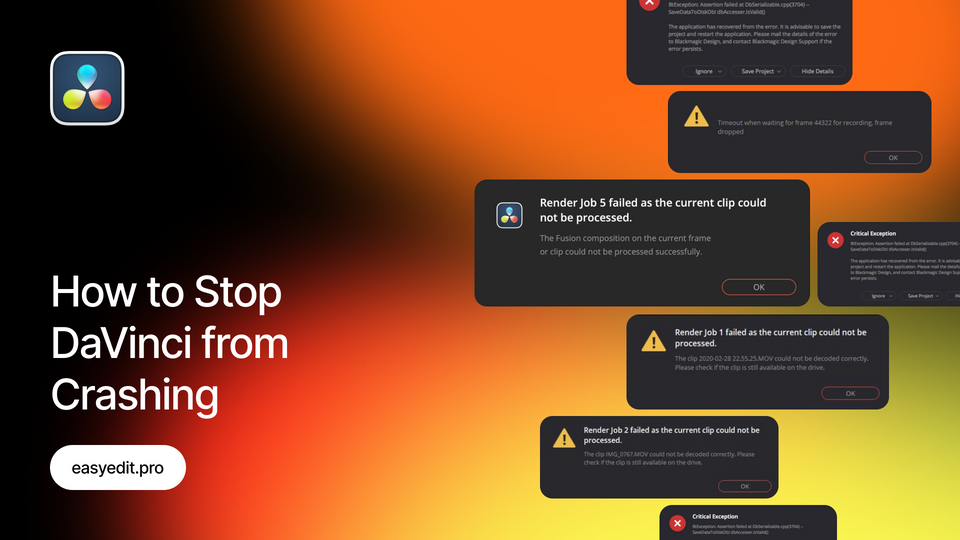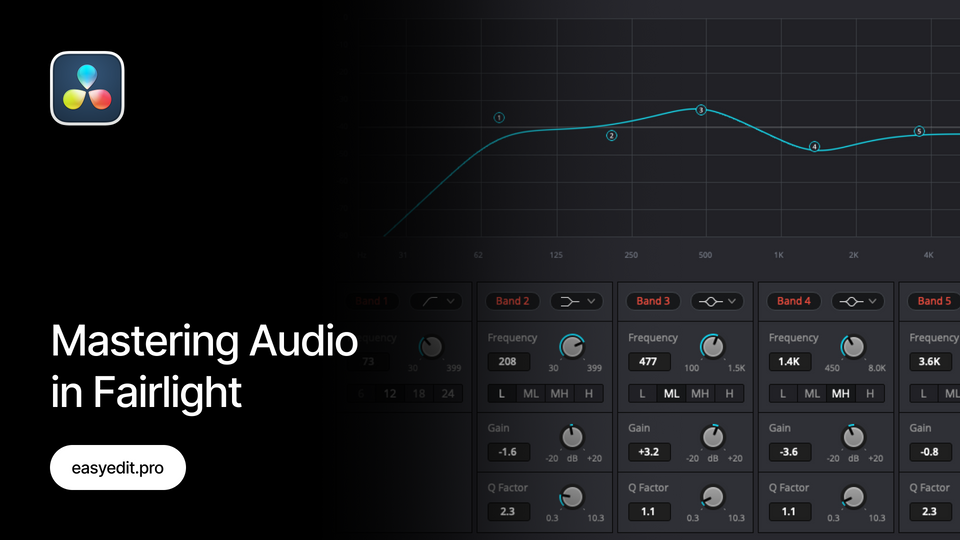
Created: 3 years ago
How to use LUTs in Davinci Resolve
LUT means “look-up table” and actively used by editors and colorists to enhance their work. They come to use when you decide to save your color grading as a preset for the future use or apply pre-made presets. How to work with LUTs in Davinci Resolve?
To apply LUTs, the best is to shoot your video in log footage. LUTs are simply changing RGB pixel data into another. The choice depends on the purpose of grading and on the color range. Some LUTs can highly saturate the video, some can soften the colors and make them deeper.
There's also a difference between color grading and color correction - the first is the part of creative process and the other is meant for the technical improvement of your video, which can be primary and secondary color correction.
Types of LUTs in Davinci Resolve
Indeed, there are also different types of LUTs, which you can use in different software. The main types are 1D and 3D:
.lut
Is a 1D LUTs and are controlled by one-dimensional setting, where you can control colors separately. The ability of grading here is quite restricted, so colorists usually turn to 3D LUTs, as they provide better choices.
.cube
Is a 3D LUT type and gives a wide range of opportunities, which you can apply by working with 17 input and output points. Today .cube LUTs are supported in Davinci Resolve, Premiere Pro an FCPX. You can export Lookup tables in .cube format for import into other color grading applications.Apart from LUTs which are operating in log format, you can also use .look files in most editing software programs.
.look
Are functioning as LUTs but aren't them particularly - these files have no baked-in color adjustment and made for the in-camera settings (that's RAW format). In Premiere Pro, you can export color adjustments as a Lumetri Look preset file in .look format.
LUTs Templates
Creating LUTs is a complex project that is not as quick as it seems. Also, finding the perfect combination of RGB preset for a big footage can take a long time or can be complicated for a beginner. Templates come in use when you can choose among a wide range of options and pick the best one from them.
SWIFT for Davinci Resolve is a good example of using LUTs. LUTs are conveniently divided into Warm, Cold, Cinematic, Black&White etc. Choose any of 500 LUTs in the pack, along with transitions.
How to apply LUTs to the footage
Basically, before inputting LUTs, normalize your log footage. It's a good tone to keep up with color palette during the whole video, not jumping here and there in your footage. Let's see how LUTs are applied in Davinci Resolve:
- Switch to the Color Tab and open your LUTs there.Next click “Reveal in Finder/Explorer”.
- Copy “EasyEdit_LUTs” folder to Davinci “LUT” folder. Select the LUT you want, see the fast preview and drag it to the Color Node.Correct it till you like it. Right-click if you want to reset the color setting and clear video look.
- Create layers to compare RGB sets to each other - you can leave first layer without changing or for adjusting white balance.
- You can adjust Color Wheels then: Offset, Gamma, Gain and Lift.
Using the templates is a very easy way to color grade - much faster than applying new ones. Unless you need to create something absolutely new.
Wrapping up
LUTs are good in saving your time, and if you need to know more about colors, we advise you to check our Color Theory.
Unlock unlimited templates for DaVinci Resolve - join EasyEdit Stock to get the highest quality LUTs, transitions, text effects, and more, with assets updated daily!
10k elements for Reels and Stories
Looking to add a splash of creativity to your Instagram stories and reels? You're just a click away! Discover our iOS app infi: packed with 10,000+ unique stickers and design elements to breathe life into your social media content.







